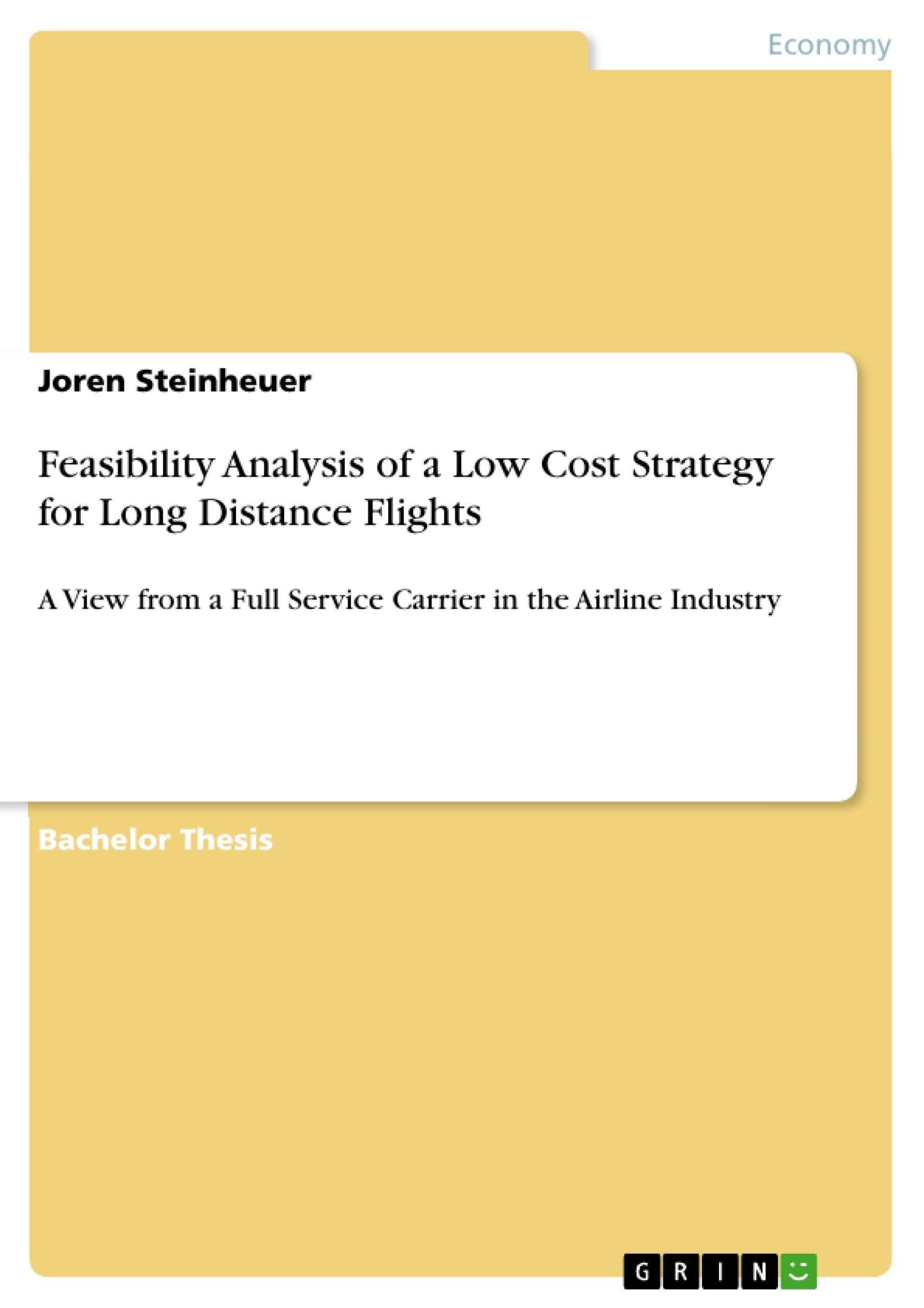This thesis focuses on the economic feasibility of a low cost strategy for long distance flights, based on the example of Eurowings in the product portfolio of the full service carrier Lufthansa.
On the ITB 2015, Europe’s largest tourist trade fair, an executive board member of Lufthansa, Karl Garnand, announced the first routes for the coming low cost long distance flight product of the company. Lufthansa is going to start this project with its brand Eurowings. The first flights to three destinations will be operated as from November 2015, tickets are already bookable. The low cost carrier business prospers for a long time. Its market share in Germany, measured by the number of passengers, grew from 4,8% in 2002 to 25% in 2014. However, this success refers exclusively to short and middle distance flights. Eurowings is not the first try of an airline to establish a low cost product for long haul flights, but there is no example with economic success.
Inhaltsverzeichnis (Table of Contents)
- Introduction
- Problem
- Ambition, Methods and Structure
- Theoretical concepts of growth strategies
- Concentration
- Horizontal integration
- Vertical integration
- Backward vertical integration
- Forward vertical integration
- Diversification
- Related diversification
- Unrelated diversification
- Theoretical concepts of competitive strategies
- Differentiation strategy
- Low cost strategy
- Best cost provider strategy
- Information about Lufthansa and Eurowings
- Growth strategy of Lufthansa
- Competitive strategies of the Lufthansa Group
- Analysis of the Eurowings low cost strategy for long haul flights
- Comparison between the Eurowings low cost and the Lufthansa full service long distance product
- Low cost carrier strategy – factors of success and examination of the transferability of these factors to long distance flight circumstances
- Results, conclusion and outlook
Zielsetzung und Themenschwerpunkte (Objectives and Key Themes)
This thesis investigates the economic feasibility of a low cost strategy for long distance flights, using Eurowings, a low cost subsidiary of the full service carrier Lufthansa, as a case study. It aims to answer the main research question: Can a long distance low cost carrier be economically successful in the portfolio of a full service carrier?
- The economic viability of low cost long haul flights
- The integration of a low cost product within the portfolio of a full service carrier
- The transferability of the typical low cost strategy to the long haul flight context
- The competitive landscape of long distance flights
- The potential benefits and challenges of a low cost long haul strategy
Zusammenfassung der Kapitel (Chapter Summaries)
- Introduction: This chapter introduces the topic of low cost long haul flights, focusing on the expansion of Eurowings as Lufthansa's low cost brand and the lack of economic success in this market segment. It outlines the main research question and sub-questions.
- Theoretical concepts of growth strategies: This chapter presents a theoretical framework for understanding growth strategies, examining concepts such as concentration, horizontal integration, vertical integration, and diversification. It provides a foundation for analyzing Lufthansa's overall business strategy.
- Theoretical concepts of competitive strategies: This chapter delves into the theoretical underpinnings of competitive strategies, focusing on differentiation, low cost, and best cost provider strategies. It offers a lens for evaluating the competitive positioning of Eurowings and Lufthansa in the long haul market.
- Information about Lufthansa and Eurowings: This chapter provides a detailed overview of Lufthansa and Eurowings, including their respective growth strategies and competitive strategies in the broader airline industry.
- Analysis of the Eurowings low cost strategy for long haul flights: This chapter examines the specifics of Eurowings' low cost strategy for long haul flights. It compares Eurowings' offering to Lufthansa's full service long distance product and analyzes the factors that contribute to low cost carrier success and their transferability to the long haul context.
Schlüsselwörter (Keywords)
This study examines the intersection of growth and competitive strategies, focusing on low cost models in the long haul flight industry. Key concepts include low cost carriers, full service carriers, long haul flights, market share, diversification, differentiation strategy, low cost strategy, and economic feasibility.
- Arbeit zitieren
- Joren Steinheuer (Autor:in), 2015, Feasibility Analysis of a Low Cost Strategy for Long Distance Flights, München, GRIN Verlag, https://www.grin.com/document/310370



